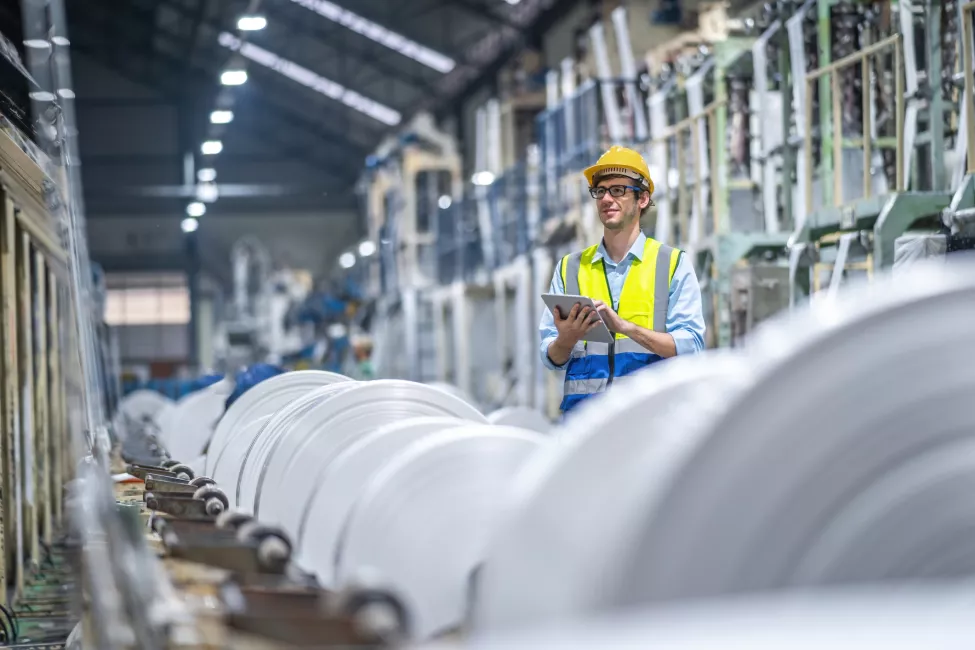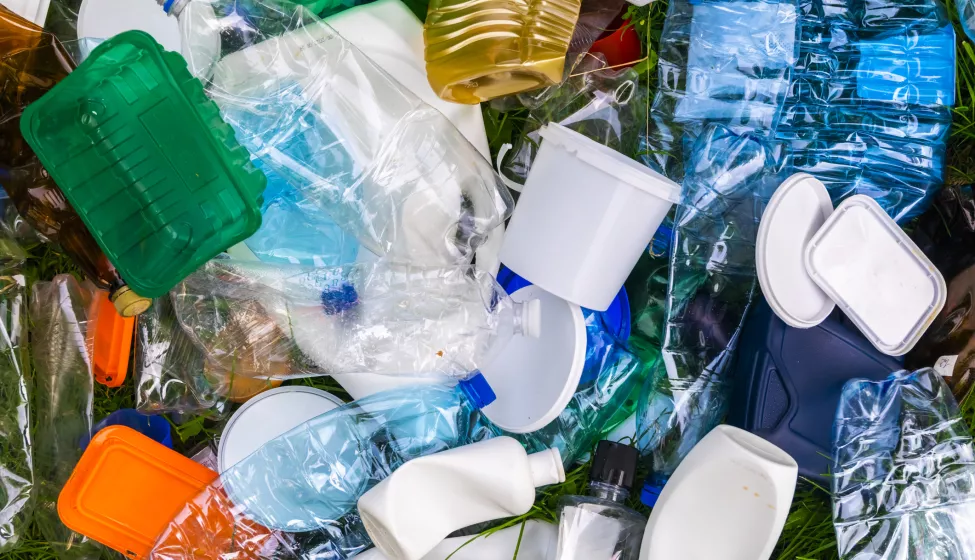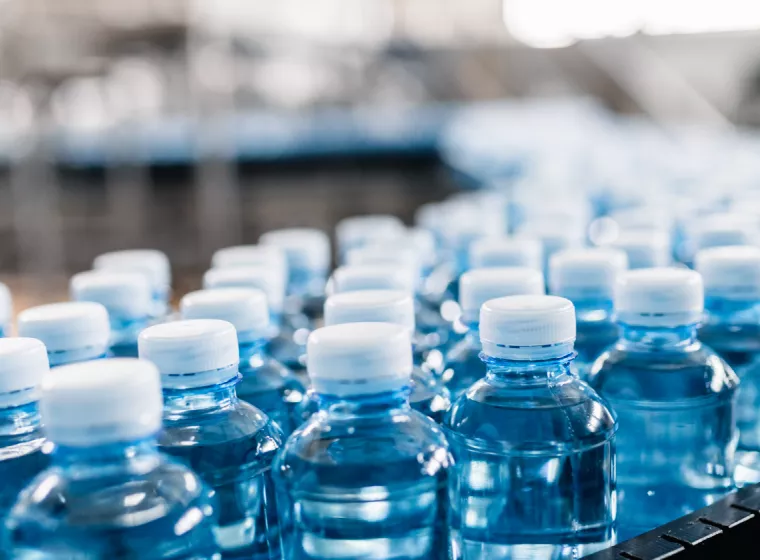May 25, 2023
How can the CPG industry move beyond the single-use model for plastics packaging?
New state mandates and changing consumer expectations are reshaping the consumer-packaged goods (CPG) industry. Across sectors, packaging producers face growing pressure to find alternatives to the "use once and discard" model that has long defined many of their products.
While there is yet no federal law governing single-use plastics or a national mandate for recycled plastic content, a spate of new state laws is pushing plastics producers to reimagine their industry's value chain. Most of the emerging policy frameworks focus on reducing use of virgin resins of polyethylene terephthalate (PET) and high-density polyethylene (HDPE) in CPG packaging.
To meet emerging mandates for PET and HDPE recycling, CPG producers will need to redesign their products, adapt their supply lines, and develop new expertise in materials selection.
Anticipating consumer demands and emerging regulation, some of the largest CPG producers — including Unilever, Nestlé, Pepsi, Coca-Cola, and others — have made public commitments to 2030 target reduction goals. To meet these goals, they're continuing to make forays into lightweighting (i.e., using less material), incorporating recycled plastic content, and launching biodegradable designs of popular, staple consumer items such as beverage bottles and chip bags.
As these regulatory and consumer forces build in the coming years, how will CPG producers need to retool their operations to source recycled content and rethink single-use plastic packaging?
Managing plastic reuse and virgin plastic resin reduction in changing CPG regulations
Due to plastic packaging's pervasiveness, the CPG industry is uniquely positioned to shape the future of reuse and reduction of virgin plastic resin. Plastic reuse and plastic source resin reduction, however, do not necessarily proceed hand-in-hand. While industry associations seek to boost the collection and sourcing of recycled plastic packaging, sustainability advocacy groups lobby for reducing the production of virgin resins, which are the raw building blocks of plastic packaging.

In reality, to meet recycled packaging mandates, the CPG industry will need to focus on both — both the use of virgin PET and HDPE thermoplastic polymer resins and the sourcing of recycled content.
Known by its resin identification code #1, PET is a thermoplastic polymer resin of the polyester family, with optical qualities and the ability to be manufactured in reduced but still functional thicknesses used frequently in single-use applications, such as water, soda, and food containers for peanut butter and honey. Around 25% of PET bottles are recycled. Yet recovering useful material through mechanical recycling poses operational and contamination concerns. The second life of recycled PET bottles is often as polyester thread and fiber for clothing and carpets or as stuffing for life jackets and pillows.
Known by its resin identification code, #2,HDPE is a thermoplastic polymer resin of the polyolefin family. HDPE is a leading CPG reuse candidate due to its simple chemical structure and low surface energy, which significantly reduces contamination risks through reuse. This easy to manufacture, durable plastic is used to make milk jugs and crates, detergent containers, and cooking oil bottles, as well as children's toys. Recycled HDPE is used to produce bottles for automotive chemicals and plastic lumber for picnic tables and decking.
Leading CPG producers have already released limited lines of water and soda bottles that use 100% food-grade recycled PET plastics. Yet mass production of entirely recycled bottles will continue to elude CPG producers due to the low commercial availability of food-grade recycled PET and recycled HDPE in pellet form. Facilitating the smooth transition of both materials and value across the entire plastic supply chain — from post-consumer waste collection through recycled product manufacturing — will be critical to addressing this gap.
CPG addresses recycling gap with lightweighting, bioplastics, reuse and refill, systems for glass bottles, and aluminum containers
To meet emerging mandates for PET and HDPE recycling, CPG producers will likely need to redesign their products, adapt their supply lines, and develop new expertise in materials selection. As they seek to scale up alternative processing methods to meet consumer demand and new state regulations, formulators, manufacturers, and other CPG stakeholders will benefit from assessing their packaging operations in light of certain key considerations and opportunities:
- Ease of mechanical recycling — As recycling targets increase each year, the post-consumer life of CPG packaging and containers must be assessed for ease of separating product components in mechanical recycling facilities.
- Lightweighting consumer packaging — Lightweighting allows manufacturers to create thinner, lighter packaging by updating their designs to reduce the amount of plastic while maintaining functional performance or by swapping out rigid packaging for flexible wraps and plastic pouches. CPG producers consider lightweighting an interim rather than a long-term solution; nonetheless, a svelte packaging refresh may reduce plastic use by 20%, which is operationally significant for CPG producers.
- Glass bottle and aluminum container recycling systems — Glass production has a very low-impact environmental footprint, but the weight of glass bottles poses transportation and storage challenges. New aluminum production involves significant energy costs, but aluminum bottles can be recycled infinitely for significantly less cost than glass. To meet shared recycling goals, states and municipalities would also need to incentivize glass and aluminum container returns through policy support and recycling infrastructure.
- Bioplastics — Leading CPG companies have experimented with trial runs of food packaging sourced, for example, from corn or sugarcane. Such bio-sourced materials decrease the use of petroleum-based virgin resin; however, scaling up supply chains to meet either regulatory targets or increasing consumer demand remains an operational challenge for value chains. Bioplastics also last as long in the environment as conventional petroleum-based plastics, leading to similar waste disposal issues.
- Compostable and biodegradable materials — Compostable or biodegradable packaging alternatives face many of the same scaling challenges as bioplastics, but while bioplastics decrease use of petroleum-based virgin plastic resin, biodegradable materials offer an end-of-life solution by decreasing the formation of landfill waste.
- Reuse and refill — Within the household goods and cleaning products sector, some CPG producers are rethinking their value chains by enabling consumers to buy cleaning products in durable packaging that can be returned, cleaned, refilled, and reused through store centers or subscription programs. These models can extend the lifespan of products and packaging and greatly reduce the use of single-use plastics but introduce new durability and performance challenges.
- Eliminating plastic packaging altogether — A number of personal care and cosmetics manufacturers — both established and emerging brands — have tried to largely eliminate plastic packaging in their product lines by selling cosmetics in reusable tins, packaging goods in biodegradable wraps, and producing solid shampoo and toothpaste that require no packaging.
What Can We Help You Solve?
Exponent's multidisciplinary staff closely monitors the continually changing regulatory and innovation landscape for single-use plastic products and packaging. Our integrated team of polymer scientists, materials chemists, chemical engineers, health scientists, ecologists, and toxicologists provides end-to-end product stewardship guidance for plastic formulation and manufacturing, product lifecycle analysis, and end-of-life impact assessment.








![Quality analysis [PSMC]](/sites/default/files/styles/cards_home_card/public/media/images/GettyImages-1219931493.jpg.webp?itok=j2a1GH9t)
![Products liability [PSMC]](/sites/default/files/styles/cards_home_card/public/media/images/GettyImages-1182213468.jpg.webp?itok=prXmOmPP)
